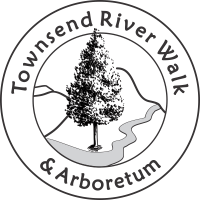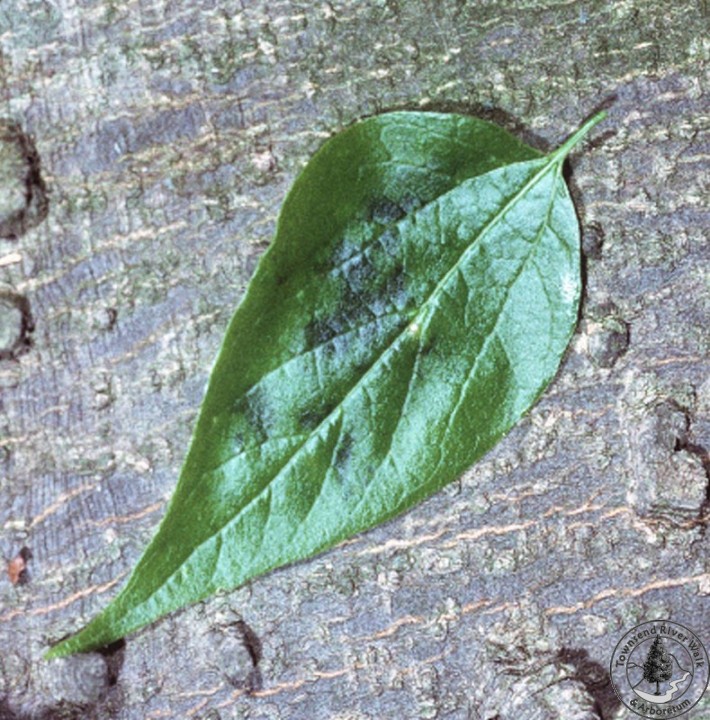Scientific Name: Celtis laevigata
Trail Location: 12

Plant Type: Deciduous
Family: Cannabaceae (Hemp)
USDA Hardiness Zones: 6, 7, 8, 9
USDA Plant Id: CELA
Height: 60 - 80
Spread: 60 - 80
Flower:: Minimal
Leaf Image:

Leaf Description:: Has no serrated edge or a serrated edge that starts mid-way up the leaf to the point.
Fall Leaf Color:: Muted Yellow
Mockingbirds,Robins and other song birds eat the fruit from the tree and use the tree for nesting. Whitetail deer eat the leaves and fruit.
Hackberry Emperor and American Snout.
Missouri Botanical: Missouri Botanical
Lady Bird Johnson Wildflower Center: Lady Bird Johnson Wildflower Center
The Sugarberry has mousy gray bark with warts! Little protrusions that look very similar to a Hackberry tree. The difference between the Sugarberry and Hackberry are in their leaf structure. Both have smooth edges along the base base but the Hackberry has small teeth up to the point of the leaf while the Sugarberry has no teeth or teeth that start around mid-way up the leaf. This tree is native to East Tennessee and likes limestone based soil such as we have here on the River Walk.







